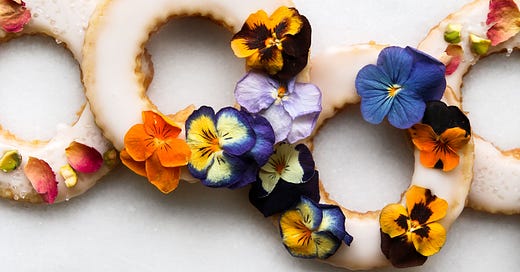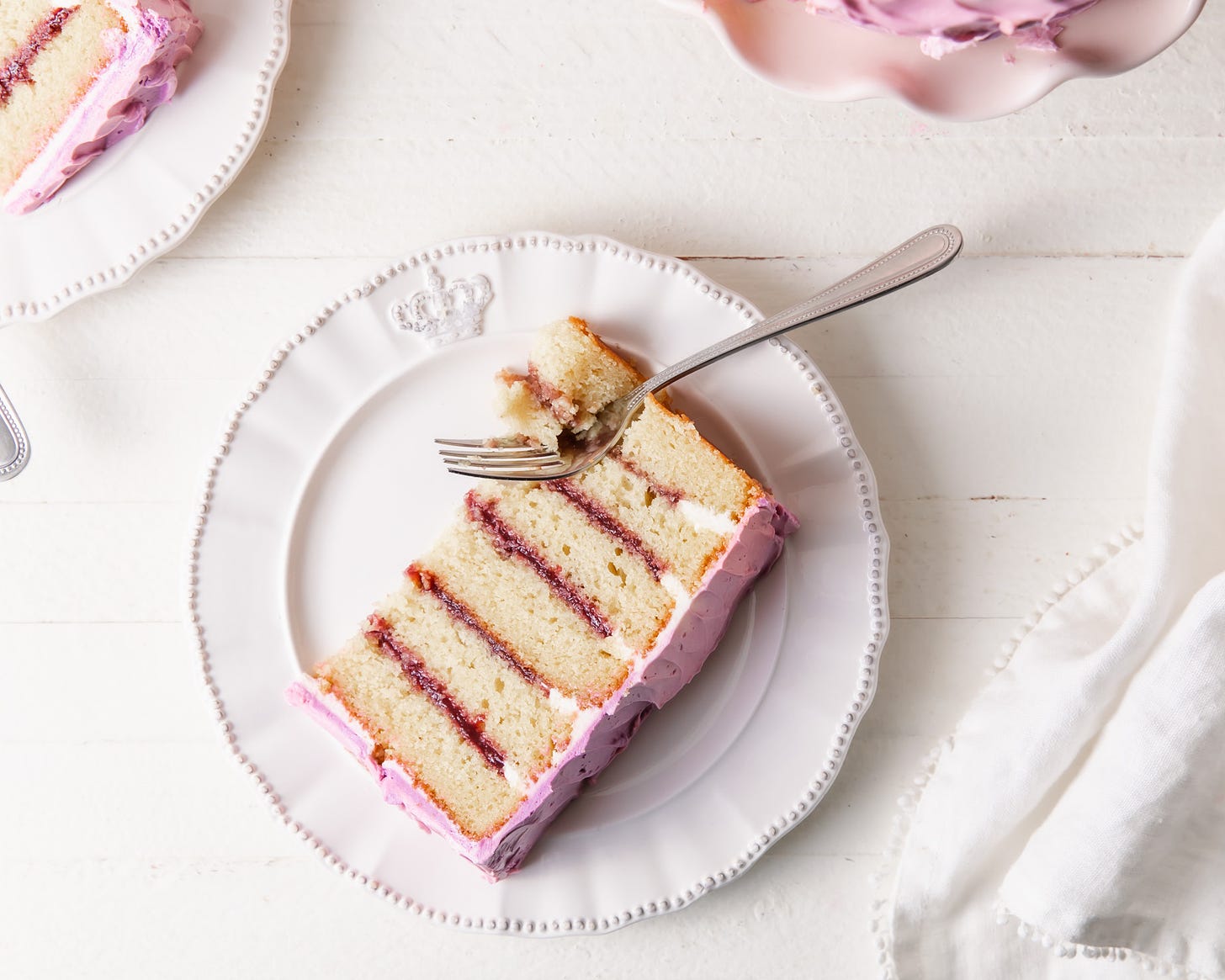Author and Saveur finalist Amy Ho puts her whole heart into everything she does. Whether that be baking all of the annual NY Times Christmas Cookies until 4am the day they are released, making spectacular gingerbread mansions out of sugar glass, finishing her Master’s in psychology while writing love letters on her blog, Constellation Inspiration, or hunting down the very best croissant in the world, Amy travels to eat and bakes to create.
You might know her Matcha Neapolitan Sugar Cookies, but I first fell in love with Amy’s gorgeous layer cakes. Topping a rustic cake with a bouquet of flowers might look easy, but it is seriously an art that Amy has mastered so well. Everything she touches is beautiful (one reason I enlisted her skills when styling my own book, Icing on the Cake). But more importantly, she is kind, hilarious, and her bakes taste incredible too.
In Blooms and Baking, Amy teaches us how to add aromatic, floral flavors to cakes, cookies, candies, and more. The recipes us…
Keep reading with a 7-day free trial
Subscribe to Tessa Huff's Bake Club to keep reading this post and get 7 days of free access to the full post archives.




